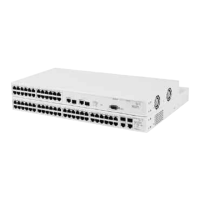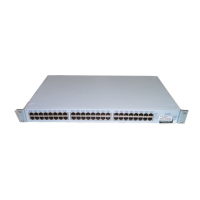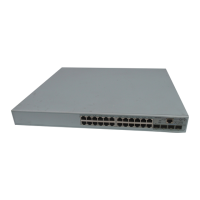94 CHAPTER 11: IP ROUTING
network. UDP packets that rely on the BOOTP relay agent are
modified and then forwarded through the router.
■ Dynamic Host Configuration Protocol (DHCP)
A host can retrieve its own configuration information including IP
address, from a DHCP server through the IP network. DHCP makes it
easier to administer the IP network. The Switch will inform your DHCP
server of the subnet of each client that requests an address so that the
client is issued an IP address in the correct subnet.
Implementing UDP Helper
Your Switch implements a generic UDP Helper agent that applies to any
port. You have to set the following UDP Helper parameters:
■ UDP Port Number A logical address, not a port (interface) on your
device. BOOTP (including DHCP) uses UDP port 67.
■ IP forwarding address The IP address to which the packets are
forwarded. You can have up to 32 combinations of port numbers and
IP forwarding addresses. You can also have up to 4 IP address entries
for the same ports.
You need to have a thorough understanding of your network
configuration to use UDP Helper. Review the network topology before
you implement UDP Helper.
Address Resolution
Protocol (ARP)
ARP is a low-level protocol that locates the MAC address that
corresponds to a given IP address. This protocol allows a host or router to
use IP addresses to make routing decisions while it uses MAC addresses
to forward packets from one hop to the next.
You do not need to implement ARP — the Switch has ARP capability built
in, but you can change and display the contents of the ARP cache.
When the host or router knows the IP address of the next hop towards
the packet destination, the host or router translates that IP address into a
MAC address before sending the packet. To perform this translation, the
host or router first searches its ARP cache, which is a table of IP addresses
with their corresponding MAC addresses. Each device that participates in
IP routing maintains an ARP cache. See Figure 25
.
